7 start with R start with R
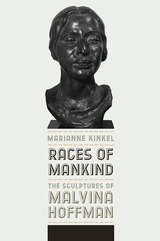
A fascinating cultural history, Races of Mankind examines how we continually re-negotiate the veracity of race through collaborative processes involved in the production, display, and circulation of visual representations.

A monumentalizing portrayal of a peasant bowed over by brutal toil, Man with a Hoe (1860–62) by Jean-François Millet (1814–1875) is arguably the most art historically significant painting in the J. Paul Getty Museum’s collection of nineteenth-century European art. This volume situates the work in the arc of Millet’s career and traces its fascinating and contentious reception, from its scandalous debut at the 1863 Paris Salon to the years following its acquisition by American collectors in the 1890s. The essays examine the painting’s tumultuous public life, beginning in France, where critics attacked it on aesthetic and political grounds as a radical realist provocation; through its transformative movement in the art market during the remaining years of the artist’s life and following his death; to its highly publicized arrival in California as a celebrated masterpiece. In the United States it was enlisted to serve philanthropic interests, became the subject of a popular poem, and once again became embroiled in controversy, in this case one that was strongly inflected by American racial politics. This is the first publication dedicated to the work since its acquisition by the Getty Museum in 1985.
This volume is published to accompany an exhibition on view at the J. Paul Getty Museum at the Getty Center from September 12 to December 10, 2023.
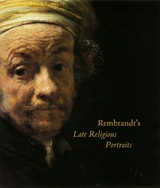
An exhibition by the National Gallery of Art and this accompanying catalog assemble seventeen of the paintings for the first time, finally giving the powerful images their due. Many of these subtle and wondrous paintings have been identified as images of apostles and evangelists, but among them are also representations of Christ, the Virgin, and still-unidentified saints and monks. In Rembrandt's typical fashion, the men and women in these portraits peer out of the dark recesses of dimly lit interiors as though burdened by the weight of their spiritual and emotional concerns. Yet recent archival research has raised questions about their attribution, the relationships among the paintings, and, in a broader sense, Rembrandt's life and career—issues addressed by the contributors to this volume. With its lavish color images and state-of-the-field research, Rembrandt's Late Religious Portraits will make a profound contribution to the understanding of this unique and provocative body of work.

By weaving together the behind-the-scenes story of the library's formation and the stories between the covers of books on display, Wadsworth and Wiegand firmly situate the Woman's Building Library within the historical context of the 1890s. Interdisciplinary in approach, their book demonstrates how this landmark collection helped consolidate and institutionalize women's writing in conjunction with the burgeoning women's movement and the professionalization of librarianship in late nineteenth-century America.
Americans in this period debated a wide range of topics, including women's rights, gender identity, racial politics, nationalism, regionalism, imperialism, and modernity. These debates permeated the cultural climate of the Columbian Exposition. Wadsworth and Wiegand's book illuminates the range and complexity of American women's responses to these issues within a public sphere to which the Woman's Building provided unprecedented access.
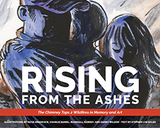
This catalog documents a 2022 exhibition of original editorial illustrations commissioned by the University of Tennessee Libraries to complement the Chimney Tops 2 Wildfires Oral History Project. The four illustrators showcased here have strong ties to East Tennessee. Paige Braddock, author of the Eisner-nominated comic strip Jane’s World and Chief Creative Officer at Charles M. Schulz Creative Associates, is an ’85 UT alumna; Charlie Daniel, beloved Knoxville News Sentinel editorial illustrator, has been a Knoxville resident since 1958; Marshall Ramsey, syndicated editorial illustrator and Pulitzer nominee, is a ’91 UT alumnus; and professional illustrator Danny Wilson has been a visible part of Knoxville’s graphic landscape since graduating from UT in 1984. The artists were given access to the project’s digital archive of oral interviews—to date, 139 have been recorded—and were asked to respond creatively to what they heard and read.
The result is Rising from the Ashes, a candid and deeply felt collection of illustrations encapsulating accounts of the merciless firestorm that enveloped Sevier County in November 2016. The flexible medium of the editorial illustration shows itself capable of extended narrative, disquieting detail, and poignant synthesis, as well as moments of beauty, hope, horror, and even humor as it ushers viewers into the recollections of wrestling and sorrow that animate the project’s still expanding archive. Bales writes, “Ultimately, the multiple fires destroyed or damaged 2,500 homes and buildings, killed 14 trapped people, injured another 200 or more, and burned over 17,000 acres of mostly woodlands that were a powder keg of dried leaves, all in a matter of three hours.” Years later, the ramifications of this event are still being felt in the community and region. Rising from the Ashes is a tribute to a people who suffered, lost, banded together, and rebuilt; and no less important, it is an expression of solidarity, recognizing how much remains to be done.
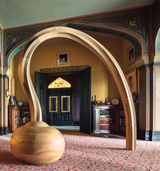
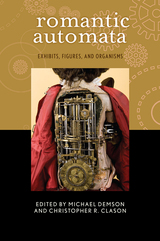
Recent scholarship in post-humanism, post-colonialism, disability studies, post-modern feminism, eco-criticism, and radical Orientalism has significantly affected the critical discourse on this topic. In engaging with the work and thought of Coleridge, Poe, Hoffmann, Mary Shelley, and other Romantic luminaries, the contributors to this collection open new methodological approaches to understanding human interaction with technology that strives to simulate, supplement, or supplant organic life.
Published by Bucknell University Press. Distributed worldwide by Rutgers University Press.
READERS
Browse our collection.
PUBLISHERS
See BiblioVault's publisher services.
STUDENT SERVICES
Files for college accessibility offices.
UChicago Accessibility Resources
home | accessibility | search | about | contact us
BiblioVault ® 2001 - 2024
The University of Chicago Press









